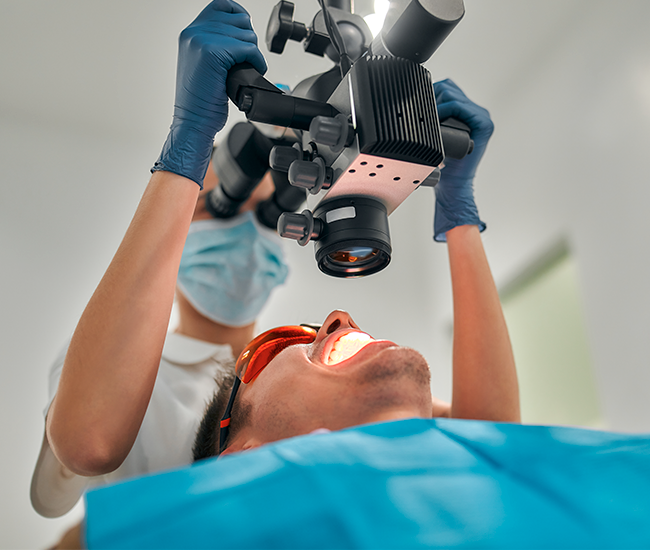
A tooth extraction or dental extraction is a simple procedure involving the removal of a tooth or teeth from the socket in the alveolar bone (maxillary or mandibular bone). The procedure is relatively straightforward and can be quickly performed using local anesthesia. There are a number of reasons why the extraction of a tooth may be needed.
These include:
Third molars (wisdom teeth) are the last molars to erupt. They tend to erupt during the late teens or later. When wisdom teeth emerges from the gum line and the jaw is large enough to accommodate them, they erupt normally and may not cause you pain or problems. In many cases, one or more of these third molars do not emerge properly. Third molars that fail to emerge fully through the gum line are called “impacted wisdom teeth.” An impacted wisdom tooth means the third molar is “impacted” between the jawbone and the gum tissue. Wisdom tooth extraction is a surgical procedure to remove one or more wisdom teeth. Dentists recommend the surgical removal of impacted wisdom teeth to avoid problems in the future. Impacted wisdom teeth can result in swelling, pain and infection. It can also cause permanent damage to nearby teeth, gums, and bone. In some cases, impacted wisdom teeth can also lead to the formation of cysts or tumors that can destroy sections of the jaw.
There are instances where a tooth fails to erupt through the jawbones and gums. While this impaction can develop for a variety of reasons, oral surgeons are in agreement that if a tooth is impacted, it should be treated to mitigate any future oral health problems that may arise as a result.
The canine tooth is one of the most likely tooth to become impacted. The canines or eyeteeth are the pointy teeth near the front of the mouth and are some of the strongest teeth in the mouth. They have the longest roots of all of the teeth and play a crucial role in the ability to bite and chew food. During development and early adolescence, many patients have canines that fail to erupt into the dental arch because of abnormal growth and crowding.
Most orthodontists make every effort to guide the canines to complete eruption because they play a critical role in a patient’s bite. The canine teeth can be impacted to the cheek side or trapped on the roof of the mouth (palate). Patients are often referred for treatment to an oral and maxillofacial surgeon who can perform a specialized surgical procedure to fix this problem.
One of the most common treatments for impacted canine teeth is a method called exposure and bonding. The oral and maxillofacial surgeon and your orthodontist work together to ensure the proper alignment of the rest of the teeth to allow the impacted tooth to come in. It consists of making a small incision in the gums and identifying the impacted tooth. Bone is removed, and a bracket and small chain are placed on the tooth. A few weeks after surgery, your orthodontist will attach a small rubber band to the chain and will start pulling the tooth into the dental arch.
For patients who will require any type of prosthesis, this being a partial or complete denture and in some cases a fixed bridge or crown, they might need some sort of pre- prosthetic surgery. For some patients, the shape of the mouth may not be ideal for the prosthesis and a surgical procedure is necessary before receiving the prosthesis to ensure proper fit and maximum comfort. When preparing to receive any removable prosthesis, the doctor must first ensure that the mouth is fully prepared to support the prosthesis comfortably to avoid any discomfort or afflictions that may arise from an improper fit.
The most common pre prosthetic surgery procedures include:
Many patients wonder why their mouth can’t support the prosthesis as is. But just as our genes give us different physical attributes (such as height, hair color, and face shape), we all have different shaped jaws and types of gum tissue growth. Sometimes, the development of our jaw bone is not perfectly shaped to accommodate tooth replacements in a stable manner that would be comfortable for the patient to wear long term. This can make daily activities such as chewing your food extremely difficult or even painful. The denture rests on the bone ridge, and the best fit is critical to ensure that the mouth maintains the proper shape and size necessary for the dentures to fit properly.
An apicoectomy is a root tip surgery. This procedure is performed to remove a tooth’s root tip to prevent further infection of the root. First, a small incision is made in the gum and bone over the tooth’s root. After the root tip is accessed, it is cleaned and sealed with a small filling. The gum is then stitched back into place.